Senior Design
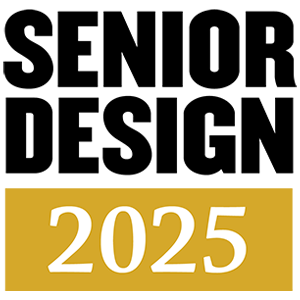 Senior Design provides PNW engineering students with supervised experience in the process and practice of engineering design.
Senior Design provides PNW engineering students with supervised experience in the process and practice of engineering design.
Students working in teams pursue an idea from conception to realistic design. The course concludes with the presentation of a substantial written report and a formal oral presentation.
Presentation Dates
All senior design presentations will take place on the Hammond Campus.
Poster Session
- Thursday, December 11
- 2:30 p.m. to 5 p.m.
- Student Union Library Building (SULB) Concourse
Oral Presentations
- Friday, December 12
- 8 a.m. to 3 p.m.
- Gyte 107
Take a look at the teams and projects for the Fall 2025 semester:
- Bubble Bursting – Flow Measurement and Visualization
- Charged Crane CIVIS Project Simulator
- Design of Diluted Combustion for Greenhouse Gas Emission Reduction
- Exploration of Oxygen Blast Furnace Operation with CFD Models
- Formula SAE-1
- Identification of Factors for Engineering Project Success
- Improving the Efficiency of the Savonius Vertical Axis Wind Turbine
- Intelligent Drone Control Using Speech Recognition and Edge Computing
- Shell Eco-Marathon – Modification of Vehicle’s Mechanical Systems
- Solar Powered Battery Charger
- Supersonic Fluid Mixing Efficiency
- The Evaluation of the Adoption of Electric School Buses In the United States
- Thin Film Solar Cell Investigation and Fabrication
Al Logistics Route Planner

Team Members
- Ezequiel Munoz
Project Advisor
- Shuhui Yang
Team Name
Route Log
Team Abstract
By utilizing machine learning, predictive analytics, and real-time data processing, the proposed AI Logistics Route Planner seeks to optimize delivery and transit routes. The planner enhances delivery speed, lowers operating costs, and facilitates dynamic rerouting in the event of unforeseen delays by utilizing AI-driven optimization techniques. This project offers a flexible framework suitable for small businesses, enterprise fleets, and autonomous delivery systems, while showcasing the practical application of AI in supply chain logistics.
Bubble Bursting – Flow Measurement and Visualization

Team Members
- Emiliano Horta
- Hugo Lorenzo
- Luke Marinkovic
- Michael Pimentel
Project Advisor
- Yun (Tom) Liu
Team Name
Burst Kinetics
Team Slogan
“Where Bubbles Burst, Science Flows”
Team Abstract
This project explores the dynamics of bubble bursting on solid surfaces, with emphasis on how bubble diameter affects internal flow behavior and particle velocity during collapse. The goal is to better understand the influence of size and surface interactions in both natural and industrial processes. To achieve this, smoke is introduced into the bubbles to visualize internal flow patterns using high-speed imaging. ImageJ is used to determine bubble diameters, while MATLAB PIVlab is applied to analyze air velocity and particle trajectories.
Charged Crane CIVIS Project Simulator

Team Members
- Jesse Anaya Cortes
- Elias Reyes
Project Advisors
- Kyle Toth
- Chenn Zhou
Team Name
C&R SimTech
Team Slogan
“Engineering the Future, One Simulation at a Time”
Team Abstract
Cranes are widely used in manufacturing environments, where human error can lead to serious accidents and production delays. Traditional on the job training carries significant risk and downtime. This project proposes the development of a realistic and interactive crane simulator designed to provide a safer training experience for future crane operators. The simulator will integrate physical joystick hardware with a Unity developed virtual environment replicating the crane’s functions and surroundings.
By focusing on usability, safety protocols, and realistic control feedback, this project aims to produce a tool that will improve training quality and reduce workplace incidents. Additionally, the simulation will monitor user performance, track mistakes, and assign guided tasks to reinforce proper crane operation techniques in a low risk environment. This integrated feedback mechanism ensures that trainees receive personalized evaluations to accelerate learning and improve skills.
Design of Diluted Combustion for Greenhouse Gas Emission Reduction

Team Members
- Yao Huang
- Priscilla Ndukaife
Project Advisors
- Armin Silaen
- Chenn Zhou
Team Name
IGNISFLOW
Team Slogan
“Where Flames Ignite a Cleaner Future.”
Team Abstract
Steel reheating furnaces traditionally rely on methane-air combustion, which generates significant CO₂ and NOₓ emissions. This project explores hydrogen as a cleaner alternative fuel, offering zero CO₂ emissions but posing challenges of increased thermal NOₓ formation due to higher flame temperatures.
Using the Linde REBOX® oxyfuel burner as the baseline, the team aims to develop and model a hydrogen-compatible burner capable of operating under diluted combustion conditions. The first goal is to validate the natural gas and oxygen configuration to establish reference data for flame behavior, temperature distribution, and emission characteristics.
The second goal introduces a 50–50 hydrogen–methane blend with oxygen to examine how partial fuel substitution influences flame stability, temperature uniformity, and NOₓ reduction. CFD simulations in ANSYS Fluent using the staged dilute oxygen injection approach will guide design optimization.
The overall objective is to identify a clean, stable, and low-emission burner design that supports industrial-scale transition toward hydrogen-based, carbon-free steel reheating systems.
Edge Based Adaptive Sampling for Distributed Weather Balloon Telemetry

Team Members
- Micah Najacht
Project Advisor
- Shuhui Grace Yang
Team Name
Edge Aero
Team Abstract
Weather balloon platforms generate high frequency atmospheric measurements, but transmitting and storing all data continuously can be unnecessary. This project explores an adaptive sampling approach where sensor rates adjust based on changing environmental conditions. The goal of the project is to test how adaptive sampling affects total data volume and overall measurement quality. The results may help improve telemetry strategies for distributed or bandwidth limited sensor networks.
Explainable Deep Computer Vision in Agriculture

Team Member
- Greg Dudash
Project Advisor
- Yang Ni
Team Name
AgriVision
Team Abstract
This senior design project, “Explainable Deep Computer Vision in Agriculture”, first explores how modern deep computer vision algorithms can be utilized in the field of agriculture. Specifically, we leverage object detection models to help detect weeds and diagnose plant diseases. The goal is not only to build detection models but also to explore ways to make their decision-making process visible, facilitating more transparent and trustworthy smart agriculture. This project study the usage of artificial intelligence in a highly practical and meaningful application area while also emphasizes explainability, a pressing issue in real-world AI deployments.
Exploration of Oxygen Blast Furnace Operation with CFD Models
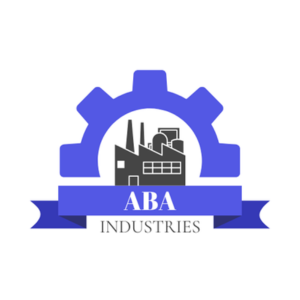
Team Members
- Ahmad Alasfar
- Mansour Almanasif
- James Barbarossa
Project Advisors
- Samuel Nielson
- Tyamo Okosun
- Chenn Zhou
Team Name
ABA Industries
Team Slogan
“Cleaner Steel, Brighter Future”
Team Abstract
The exploration of oxygen blast furnace operation with CFD models takes an iterative approach to the simulation of the oxygen blast furnace. The conditions of hot blast oxygen content, hot blast temperature, natural gas injection rate, steam injection, and top gas recycling within the blast furnace are varied in a parametric format until a desirable set of operating conditions for steel production is reached.
The team aims to discover a set of operating conditions which is more efficient and productive than a standard industrial blast furnace. This set of conditions provides for proper raceway bosh temperature and hot metal temperature, which is hot enough that the furnace will not freeze, but low enough to maintain a proper hot metal composition. Additionally, the top gas must maintain an adequate temperature in order to avoid condensation at the exit of the furnace.
The blast furnace is broken down into two separate simulations. These include the tuyere-raceway model and shaft model. The input conditions such as hot blast rate, species, temperature, and natural gas rate are input into the tuyere-raceway model. The results from the raceway will then be utilized as inputs to the shaft. The shaft simulation will output results that may be analyzed to examine the operation, efficiency, and productivity of the furnace.
Formula SAE-1
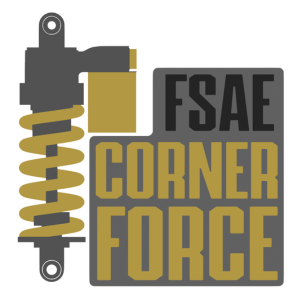
Team Members
- Juan Miguel Portillo
- Ariana Raygoza
- Diego A Villanueva
Project Advisor
- Yun (Tom) Liu
Team Name
FSAE Corner Force
Team Slogan
“Handling every Challenge, Perfecting every Turn”
Team Abstract
The scope of this project was to adapt and improve the FSAE suspension system. Due to the offset between the Formula SAE competition schedule and the Senior Design I and II courses, the project was divided into two phases: Pre-competition and post competition. During the first phase, the team focused on front wheel hubs and suspension maintenance to ensure the vehicle was ready for the competition in May. In the second phase, the team developed a rear anti-roll bar system for the 2025 2026 vehicle to enhance handling performance and adjustability. For the second half, the team worked on a rear anti roll bar design and computational steering model, and transfer of knowledge for the 2025-2026 car.
Fraudshield: A Web-Based Platform for Online Fraud Education and Prevention

Team Members
- Ryan Streeter
Project Advisor
- Hairong Zhao
Team Name
FraudShield Development Team
Team Slogan
“Defense Against Digital Deception”
Team Abstract
This project is a web based educational platform designed to educate users on how to identify, prevent, and respond to common forms of digital fraud. The system uses a structured learning curriculum, interactive labs, quizzes, and real-life examples to help users determine phishing attempts, scam messages, malicious links, and other forms of digital fraud/threats.
Identification of Factors for Engineering Project Success

Team Members
- Guadalupe Amador
- Melany Cruz Alvarado
- Logan Xavier Kosteroski
- Maaz Parvez
Project Advisor
- Wubeshet Woldemariam
Team Name
Beyond The Blueprint
Team Slogan
“Precision Planning for Project Excellence”
Team Abstract
The success of engineering projects depends on a complex interplay of factors that influence cost, schedule, quality, and safety. This study identifies and classifies the key factors that contribute to project success in the construction industry. Using a combination of literature analysis, case study evaluation, and survey responses from engineering professionals across the United States, the research categorized the most influential success factors affecting project outcomes.
The collected data was organized by industry, focusing primarily on engineering projects within the construction sector. Results from the analysis identified five primary factors of project success: effective planning, stakeholder engagement, financial management, technological integration, and proactive risk control. Patterns across multiple studies and survey responses revealed that projects prioritizing communication, stakeholder engagement, and overall adaptability achieved higher performance and long-term sustainability. These findings provide practical insights for improving project planning, management, procurement, and quality control.
Overall, the results highlight how modern project management models align with these critical success factors, revealing the patterns that differentiate consistently successful projects from those facing recurring challenges.
Ultimately, this study bridges the gap between theoretical project management principles and real-world engineering challenges, offering practical recommendations that project managers can implement to enhance project outcomes.
Improving the Efficiency of the Savonius Vertical Axis Wind Turbine
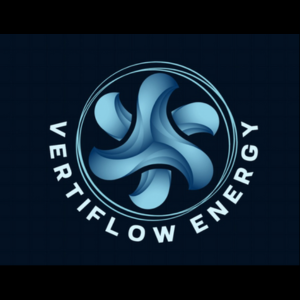
Team Members
- Shelby Hooley
- Daniel Marroquin
- Tyler Orloff
- Julian Sink
Project Advisors
- Khair Al Shamaileh
- Xiuling Wang
Team Name
VertiFlow Energy
Team Slogan
Powering Tomorrow with Smarter Winds
Team Abstract
Renewable energy generation in urban areas is a rising issue as the energy sector continues to be pushed toward renewable energy despite continually growing volume on the power grid. Vertical axis turbines are ideal for urban areas due to their low real estate footprint. The Savonius vertical axis wind turbine is known to be able to operate at low wind speeds, have low noise output, and be relatively cheap to manufacture. The issue that currently exists with utilizing the Savonius vertical axis wind turbine as a major renewable energy source in urban areas is that the current efficiency of the turbine is relatively low.
At its current efficiency level, this turbine design is not practical for use in urban infrastructure; however, it is hypothesized that a Superformula introduced by Johan Gielis in 2003 is capable of predicting an alternate rotor design for the Savonius turbine that will improve its efficiency to a level where it can be effectively utilized as a renewable power source.
The primary objective of this project is to improve the efficiency of the vertical axis wind turbine through utilization of the superformula developed by Johan Gielis. This project will involve constructing two variations of the Savonius wind turbine and testing the efficiency of both mechanisms. One turbine will be built according to the standard Savonius turbine design while the other will be a redesigned Savonius turbine with improved efficiency. Other objectives of this project will include simulation testing and mathematical calculations performed using a MATLAB code written for the purpose of applying said superformula.
Results from these tests will be used to make final conclusions about the effectiveness of the Savonius vertical axis turbine and whether a redesigned version can serve as an effective alternative to horizontal axis turbines. Efficiency comparisons between a conventional Savonius turbine and a redesigned model will determine the feasibility of using improved Savonius turbines as viable renewable energy sources in urban infrastructure. The findings of this study could contribute to expanding the role of VAWTs in addressing rising energy demands and reducing reliance on fossil fuels.
Intelligent Drone Control Using Speech Recognition and Edge Computing

Team Members
- Hayley Tsuen
- Cole Viking
- Rayhan Zaman
Project Advisor
- Mohsen Saffari
Team Name
SkyCommand
Team Slogan
“We talk, drones listen”
Team Abstract
This project aims to develop an intelligent drone system that can be controlled through voice commands and can be enhanced with real-time computer vision using edge computing. By potentially integrating speech recognition and object tracking, the drone can respond to verbal instructions and autonomously identify and follow targets.
The system is powered by a Jetson Nano for onboard AI processing and utilizes the Pixhawk flight controller for flight stabilization and navigation. The project demonstrates the potential of combining natural language interfaces with autonomous aerial systems to improve human–machine interaction, reduce manual control demands, and expand the applications of unmanned aerial vehicles in surveillance, search and rescue, and industrial inspection.
Intelligent Drone Control Using Speech Recognition and Edge Computing

Team Members
- Emmanuel Olawale Ariyo
Project Advisor
- Ruijian Zhang
Team Name
Data Mine Project
Team Slogan
“Tuning In the Voices of Northwest Indiana”
Team Abstract
The project is launching IW Wavez, a noncommercial radio station dedicated to uplifting under-resourced voices, fostering entrepreneurship, and strengthening the regional economy. This initiative addresses gaps in access to media platforms and entrepreneurial resources, ensuring that underrepresented communities in Northwest Indiana have a space to be heard. The project’s impact extends beyond broadcasting it will provide cultural awareness, mindset development, financial savvy, professional growth, and startup dynamics knowledge to participants and the broader community.
The project will combine community research, data analysis, and digital prototyping to build practical tools that support the launch of IW Wavez: 1. Community Research & Surveys – Collect data on listener interests, cultural relevance, and regional content needs. 2. Data Analysis & Visualization – Use Google Sheets, Airtable, or similar tools to organize and interpret findings. 3. Dashboard Development – Prototype interfaces for scheduling, funding tracking, and content planning. 4. Testing & Feedback – Pilot tools with community stakeholders, revise based on input.
Rogue Space Invader

Team Members
- Jesus Trejo III
Project Advisor
- Hairong Zhao
Team Name
Lost Ctrlr Games
Team Slogan
“Shoot for the stars”
Team Abstract
This project focuses on the design and development of a 2D Space Invaders-inspired roguelike video game created using the Pygame framework. The game features multiple mechanics, enemies, weapons, and randomized events to ensure that each playthrough offers a unique experience. It also includes a fully functional shop, an interactive map system, and a “How to Play” page to guide new players. Each run can culminate in a challenging boss encounter or continue indefinitely in an endless mode for extended play. Playtesting was conducted to evaluate gameplay balance and gather feedback for improvement.
Shell Eco-Marathon – Modification of Vehicle’s Mechanical Systems

Team Members
- Thomas Coffey
- Lauren Courtney
- Nathan Keel
- Mathew Schwer
Project Advisors
- Hansung Kim
- Victor Romero Gomez
Team Name
EcoManiacs
Team Slogan
“Driven by Madness, Powered by Innovation”
Team Abstract
This project aims to improve the mechanical systems of the PNW Pantheta Shell Eco-Marathon electric vehicle, including the powertrain, rollbar and seat, rear brake, and rear compartment components of the vehicle. Each improved component requires its own research, decision-making, and goals. Overall, each component must be designed to incorporate seamlessly with the rest of the vehicle, work optimally with the other improved systems, and adhere to the 2026 Shell Eco-Marathon regulations.
The first semester focused on the powertrain and rear brake systems. For the powertrain, an improved motor and peripherals were selected and installed for the 2025 competition. The selection of these components required careful simulation through Simulink and Ansys software, detailed research into each purchased component, and quick installation during competition preparations. For the rear brakes, optimized rotors and caliper mounts were focused on to improve safety and stability when decelerating. This optimization required the design of certain components in OnShape, simulation of the designed components, careful selection of rotors, brake pads, and other peripherals, and thorough physical testing. Improvements to the vehicle through these changes were measured through vehicle performance during the 2025 Shell Eco-Marathon.
After competing in the 2025 competition, the scope of the project was adjusted to include the rollbar and rear compartment of the vehicle. The goals for this project include the complete redesign of each component to further optimize the chassis of the vehicle. For the rollbar, a full redesign to reduce weight and form a more coherent vehicle chassis was prioritized. This redesign includes the modeling and simulation of the current component in OnShape, SolidWorks, and Ansys, a topology optimization in Ansys Discovery, and the machining and installation of the completed component.
For the rear compartment, the main objective was to increase space and accommodate for rear vehicle components such as the battery, electrical components, wiring, and rear axle. This redesign required thorough simulation through Ansys, modeling and designing through OnShape and SolidWorks, and machining and installation of the redesigned components for physical testing on the vehicle.
As with the previous projects, these new designs must comply with the 2026 Shell Eco-Marathon regulations alongside prioritizing the stability of the vehicle and safety of future drivers.
Solar Powered Battery Charger
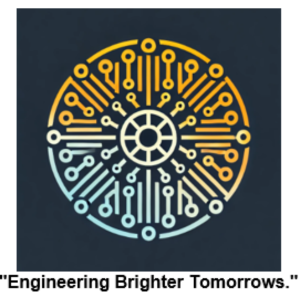
Team Members
- Ryan Allison
- Nathan Carlson
- Christopher Fieramosca
- Avery Smith
Project Advisor
- David Kozel
Team Name
FASC Tech
Team Slogan
Engineering Brighter Tomorrows
Team Abstract
The Solar Powered Battery Charger project aims to design a portable and efficient system capable of charging batteries using solar energy. This solution addresses the growing demand for reliable off-grid power sources, particularly in outdoor or emergency scenarios where conventional power outlets are unavailable. The system will utilize photovoltaic panels to harvest solar energy, which will then be regulated through a DC-DC converter and used to charge and monitor a battery system.
The design incorporates microcontroller-based control, sensors, and power electronics components such as gate drivers and MOSFETs to ensure efficient power conversion and safety. A solar tracking design will be implemented to optimize the process. A feedback loop from the microcontroller is used to find the optimal positioning for energy. Although the final implementation and construction will be completed in the next academic term, this report summarizes the design process, evaluates alternative configurations, and outlines the technical and practical considerations guiding the system architecture.
This project is a multidisciplinary effort involving Electrical, Computer, and Mechanical Engineering students. It provides hands-on experience in power electronics, embedded systems, motors, mechanical mechanisms, and renewable energy applications. Ultimately, the solar-powered battery charger will be a versatile and sustainable energy solution for various mobile and emergency-use cases.
Supersonic Fluid Mixing Efficiency
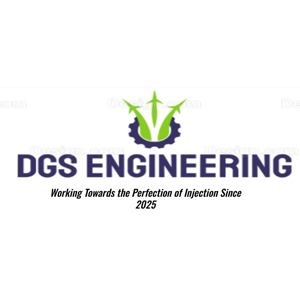
Team Members
- Samuel Burbage
- David Campbell
- Garrett Sandefur
Project Advisor
- Yun (Tom) Liu
Team Name
DGS Engineering
Team Slogan
“Working Towards the Perfection of Injection Since 2025”
Team Abstract
The intention of this project is to design, develop, and manufacture a fuel injector for a supersonic test chamber to identify what parameters affect fluid-air mixing. Experimental methods such as Schlieren Photography and Global Luminescent Oil Film imaging will be performed to investigate various fuel injection configurations in supersonic flow, focusing on the fuel-air mixing process.
The goal is to identify optimal injection modes that will ultimately enhance combustion efficiency at high speeds. Building upon the senior design work from 2024, the project will also explore the effects of inflection angles in the wind tunnel, as these angles influence flow characteristics, as well as modify converging and diverging injector designs that may improve airflow in supersonic conditions.
To address these challenges, a supersonic wind tunnel is used to simulate scramjet conditions at Mach 2, allowing for controlled experimentation on fuel injection strategies. Driven by high-pressure vacuum tanks, this wind tunnel provides the necessary flow and conditions for testing. It is equipped with a non-combustible gas fuel injection device and a specialized setup for Schlieren Photography and GLOF Imaging. These techniques will capture density variations and vector fields which can provide qualitative and quantitative data necessary for identifying optimal mixing patterns.
The project is expected to yield new knowledge on fuel-air mixing dynamics in scramjets, with validated methods for improving mixing efficiency and engine performance. The wind tunnel and test section will provide data that can be processed via MATLAB to understand areas of interest and how the geometry of the injectors directly affect mixing.
The Evaluation of the Adoption of Electric School Buses In the United States

Team Members
- Mohammad Siamur Rahman
- Salvador Sanchez
- Prince Shyaka
- Kyle Simmons
Project Advisor
- Wubeshet Woldemariam
Team Name
Quad S Investigating
Team Slogan
“No limits, Just Civil Minds at Work”
Team Abstract
The purpose of this project is to use machine learning techniques to evaluate how the adoption of electric school buses is progressing throughout the United States. Multiple factors were considered so relations between these factors and how each state is progressing in this adoption could be seen. The primary machine learning technique that was used to make this possible was clustering. Data was taken from multiple reliable and trusted sources and ran through a code that was created by a group member. The other group members analyzed the output of the code and used this to find correlations. The paper is also meant to bring awareness to why the adoption of electric school buses is so important, highlighting health complications with children’s development.
Thin Film Solar Cell Investigation and Fabrication

Team Members
- Baha Atshan
- Luai Boarish
- Juan Diaz
Project Advisor
- Kim Hansung
Team Name
Current Controllers LLC
Team Slogan
“Connected Minds, Limitless Possibilities”
Team Abstract
Dye-Sensitized Solar Cells (DSSCs) are an emerging class of photovoltaic technology that offer cost-effective manufacturing, flexibility, and potential for high efficiency under low-light conditions. Unlike traditional silicon-based solar cells, DSSCs use dye to capture sunlight and a mesoporous semiconductor layer for electron transport. While they have been extensively studied in laboratory settings, challenges remain in optimizing their efficiency, stability, and scalability.
This project builds upon the initial literature review and simulation planning to explore practical applications. The first stage involves developing and validating COMSOL Multiphysics simulations of DSSCs to understand material properties, electrical performance, and structural parameters. Following this, the second stage will focus on fabricating a real DSSC prototype, enabling direct comparison between simulated and experimental results.